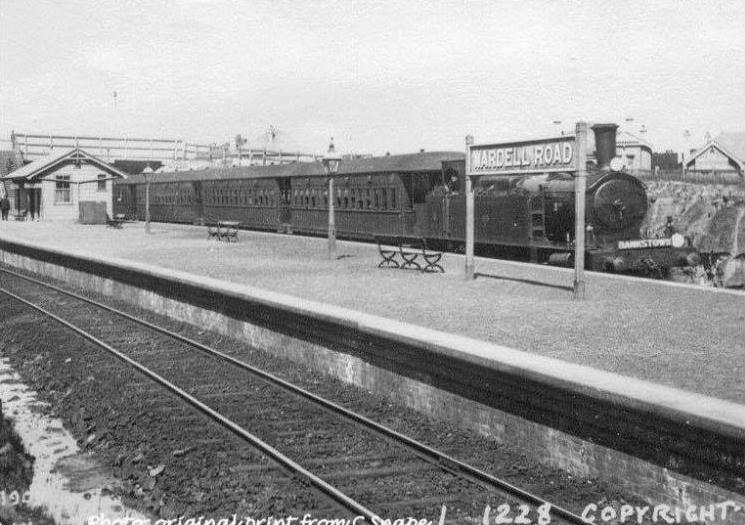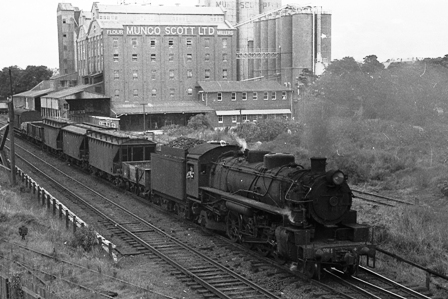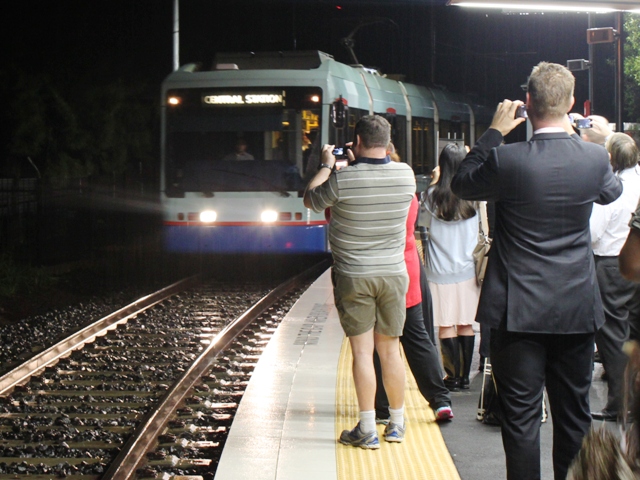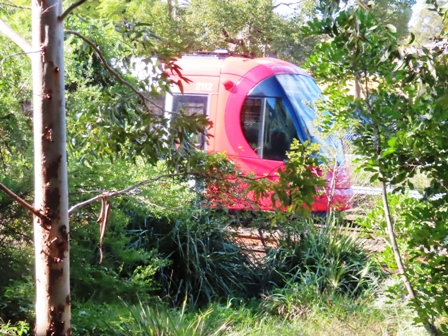Introduction
Within a short walk of our home we have Dulwich Hill Railway
Station and Dulwich Hill Light Rail Stop. The Light Rail line
utilises what was previously the Freight Line.
The Suburban Line
Dulwich Hill Railway Station was originally named Wardell
Road Station and was opened on 1st February 1895 as
part of the Sydenham to Belmore line, it was extended to
Bankstown in 1909. In 1928, to make it part of the loop line
to Lidcombe, it was further extended to Regents Park. The
station is located 7.87 kilometres from Central Station
A number of submissions were made to have the name of the
station changed to Dulwich Hill but initially there was
concern that confusion would exist with Dulwich Hill Tram
Terminus, however its was renamed Dulwich Hill on 1 st
July 1920.
The line was electrified in 1926. Prior to this C30 or T30
class steam locomotives would have been in use on this line as
we can see in the photograph.
The current platform and booking office were built in 1935
and have basically remained unchanged to the current day. The
island platform is the only one of its type (which runs
parallel to the goods line) that has not been converted to
side platforms on the Bankstown line.
The bridge on Wardell Road was built in 1930 and upgraded in
1975 when a concrete deck was added.
How times move on, we now have the Metro Rail project with
the platform undergoing major work recently, all done in a
couple of weeks, and soon there will be a new bridge linking
the suburban line to the light rail complete with lifts. The
Inner West Council have also budgeted $1.25 million to upgrade
the station precinct. The Metro Rail project is expected to be
completed in 2024.
The Freight Line

The freight line near our home was part of a much larger rail
infrastructure. I believe, its significance is very
understated. It is so significant that it has been suggested
it changed Sydney from a large country town to a major and
dynamic city. I ponder why we identify certain buildings and
other structures as historically significant yet major
infrastructures like the Freight Line and their builders go
unrecognised. Let us acknowledge the Chief Commissioner at the
time, Thomas Richard Johnson, who oversaw the works from 1907
to 1914.
At the time of Federation there was a major drought which
lasted from 1895 to 1903. At the end of it a massive increase
in grain production resulted but unfortunately the railways
did not have capacity to transport it and, as farmers had
political power, actions were taken to address their problem.
In the "Dictionary of Sydney", Bob McKillop
states four reasons for building this freight network;
- Provide connection to the newly built large grain handling
and two coal loaders at Glebe Island.
- Reduce congestion on the passenger train network.
- Connect a number of meat processing facilities across
Sydney.
- Provide better connectivity for the Illawarra line.
The freight line was opened in two stages, the first section
from Dulwich Hill to Rozelle was opened on 29 May 1916. The
second from Rozelle to Darling Island, which requires the
building of viaducts and tunnels was delayed and opened on 23
January 1922.
In the 1930s, with the introduction of the heavy D57 Class
locomotives, it was necessary to upgrade sections of the line.
What a difference our neighbourhood would have been with these
large locos belting through it.
During the Second World War, the line was used to secretly
move troops to ships waiting on the harbour. Industry built up
along the line but by the 1990 most of these had moved to the
outer suburbs, with the result being only the occasional
freight train used it to service the couple of flour mills.
Light Rail

As industry moved out of the inner-urban area and freight
wharves were relocated, the need for the freight line
diminished. In 1997 portion of this line commenced being
converted to light rail, this went from Central Railway to
Lilyfield and opened for service in 2000. After considerable
lobbying by local residents, especially when the Government
stated sought to delay the project due to money not being
available, work was finally commenced to extend the service to
Dulwich Hill.
The first tram on the extension, now known as the Inner-West
Light Rail, ran on 27 March 2014. When the Light Rail was
being planned some of us thought that only one track should be
allocated to the trams and that the other should be made
available to the establishing of a bike path. We were
incorrect in our assessment of patronage, travellers quickly
responded to this new way of travel. Not only was it more
gentle and quieter than other transport options but much of
the extension ran along the attractive leafy GreenWay corridor
with its many well maintained bush regeneration areas.
Passenger loads increased rapidly, during the morning
peak overcrowding happened every morning with passengers
sometimes not able to get on because of the crush. The twelve
trams were not adequate and after strong lobbying by the local
state member of Parliament it was agreed to purchase four
additional units. These have not yet arrived but COVID has
reduced the urgency.
The trams were initially Variotrams models, which had
been used on the initial section to Lilyfield, as a temporary
action additional units were leased from Spain to support the
extension. The leased units were Urbos 2s, which were
returned when the fleet of twelve Urbos 3 units arrived.
The success of the Dulwich Hill light rail has no doubt
contributed to other Light Rail projects around Sydney. Good
public transport, what a benefit it is!? As the saying goes,
"if you build it they will use it".